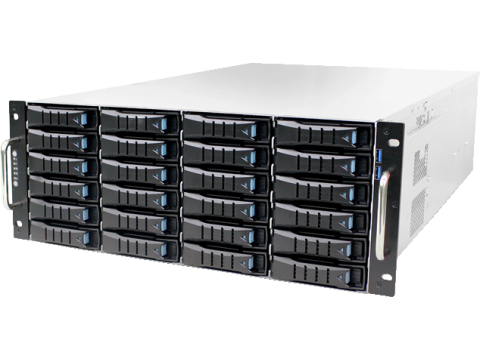Server for IP Surveillance Systems: Modern Guide to Optimal Setup
Key Components of an IP Surveillance Server
Disk Arrays & External Devices
Servers for IP surveillance systems represent the pinnacle of technology for managing large-scale digital surveillance setups. Here’s what you need to know to make informed choices about hardware and software.
Core Server Performance Metrics
The performance of a surveillance server hinges on these four parameters:
- Processor Power: Handles video streams and ensures smooth operation under load.
- Ethernet Controller Speed: Dictates how efficiently data flows from IP cameras and to users.
- GPU Performance: Critical for rendering live feeds and archives.
- RAM Capacity: Ensures swift multitasking and data caching.
Tips for Optimizing Resources
- Account for peak load conditions by calculating system requirements based on the maximum resolution, frame rate, and number of cameras.
- Reserve an additional 15–20% capacity to accommodate future upgrades or spikes in demand.
- Remember: Video streaming (live or archived) is more processor-intensive than mere storage. Ensure CPU load doesn’t exceed 40–45% during operations.
Networking Requirements
The server's Ethernet controller must handle all incoming and outgoing data without exceeding 50% of its bandwidth. Options for scaling include:
- Dual Network Adapters: Split inbound and outbound traffic.
- Advanced Multi-Port Controllers: Aggregate multiple inputs into one virtual channel.
- Fiber Optics: Boost long-distance, high-speed data transfer.
Choosing the Right Software
Most IP surveillance servers run on Windows or Linux.
- Windows: Offers broader software compatibility.
- Linux: Renowned for reliability but requires specialized expertise.
Look for software with these features:
- Full compatibility with your IP cameras and their advanced functions.
- Built-in or integrative video analytics (e.g., facial recognition, license plate scanning).
- Multi-server networking capabilities.
- Active technical support and updates.
Disk Array Options: RAID Systems
RAID (Redundant Array of Independent Disks) setups enhance storage reliability and performance.
Popular RAID Configurations
- RAID 1 (Mirroring): Copies data onto two drives for redundancy but halves usable storage.
- RAID 3 (Error Detection): Optimized for high throughput; suitable for larger setups.
- RAID 5 (Balanced Performance): Distributes parity information across disks, combining speed and resilience.
- RAID 6 (Maximum Reliability): Highly redundant but slower due to frequent data verification.
Each setup offers a tradeoff between performance, usable space, and fault tolerance.
External Device Integration
- PTZ Modules: Control motorized cameras via RS-232/485 ports.
- Analog Camera Adapters: Connect older cameras using I/O boards.
- Digital Inputs: Enable integration with alarm systems or motion detectors.
Key Takeaways for Choosing a Server
- Prioritize hardware specs like CPU, RAM, and network controllers for scalability.
- Select software that minimizes resource overhead while maximizing functionality.
- Opt for RAID configurations that suit your storage and reliability needs.
Investing in the right server platform ensures smooth operations, seamless upgrades, and long-term reliability for your IP surveillance system.

